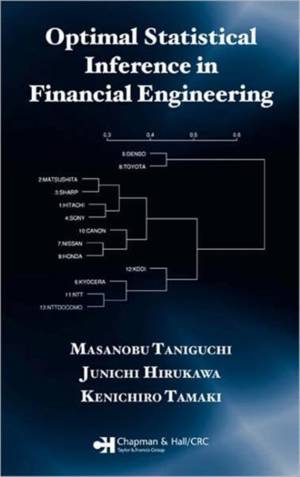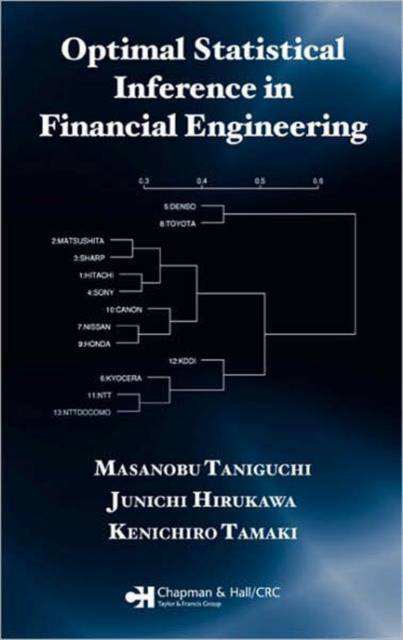
- Afhalen na 1 uur in een winkel met voorraad
- Gratis thuislevering in België vanaf € 30
- Ruim aanbod met 7 miljoen producten
- Afhalen na 1 uur in een winkel met voorraad
- Gratis thuislevering in België vanaf € 30
- Ruim aanbod met 7 miljoen producten
Zoeken
Optimal Statistical Inference in Financial Engineering
Masanobu Taniguchi, Junichi Hirukawa, Kenichiro Tamaki
Hardcover | Engels
€ 216,45
+ 432 punten
Omschrijving
Until now, few systematic studies of optimal statistical inference for stochastic processes had existed in the financial engineering literature, even though this idea is fundamental to the field. Balancing statistical theory with data analysis, Optimal Statistical Inference in Financial Engineering examines how stochastic models can effectively describe actual financial data and illustrates how to properly estimate the proposed models. After explaining the elements of probability and statistical inference for independent observations, the book discusses the testing hypothesis and discriminant analysis for independent observations. It then explores stochastic processes, many famous time series models, their asymptotically optimal inference, and the problem of prediction, followed by a chapter on statistical financial engineering that addresses option pricing theory, the statistical estimation for portfolio coefficients, and value-at-risk (VaR) problems via residual empirical return processes. The final chapters present some models for interest rates and discount bonds, discuss their no-arbitrage pricing theory, investigate problems of credit rating, and illustrate the clustering of stock returns in both the New York and Tokyo Stock Exchanges. Basing results on a modern, unified optimal inference approach for various time series models, this reference underlines the importance of stochastic models in the area of financial engineering.
Specificaties
Betrokkenen
- Auteur(s):
- Uitgeverij:
Inhoud
- Aantal bladzijden:
- 378
- Taal:
- Engels
Eigenschappen
- Productcode (EAN):
- 9781584885917
- Verschijningsdatum:
- 1/11/2007
- Uitvoering:
- Hardcover
- Formaat:
- Genaaid
- Afmetingen:
- 156 mm x 233 mm
- Gewicht:
- 656 g

Alleen bij Standaard Boekhandel
+ 432 punten op je klantenkaart van Standaard Boekhandel
Beoordelingen
We publiceren alleen reviews die voldoen aan de voorwaarden voor reviews. Bekijk onze voorwaarden voor reviews.











